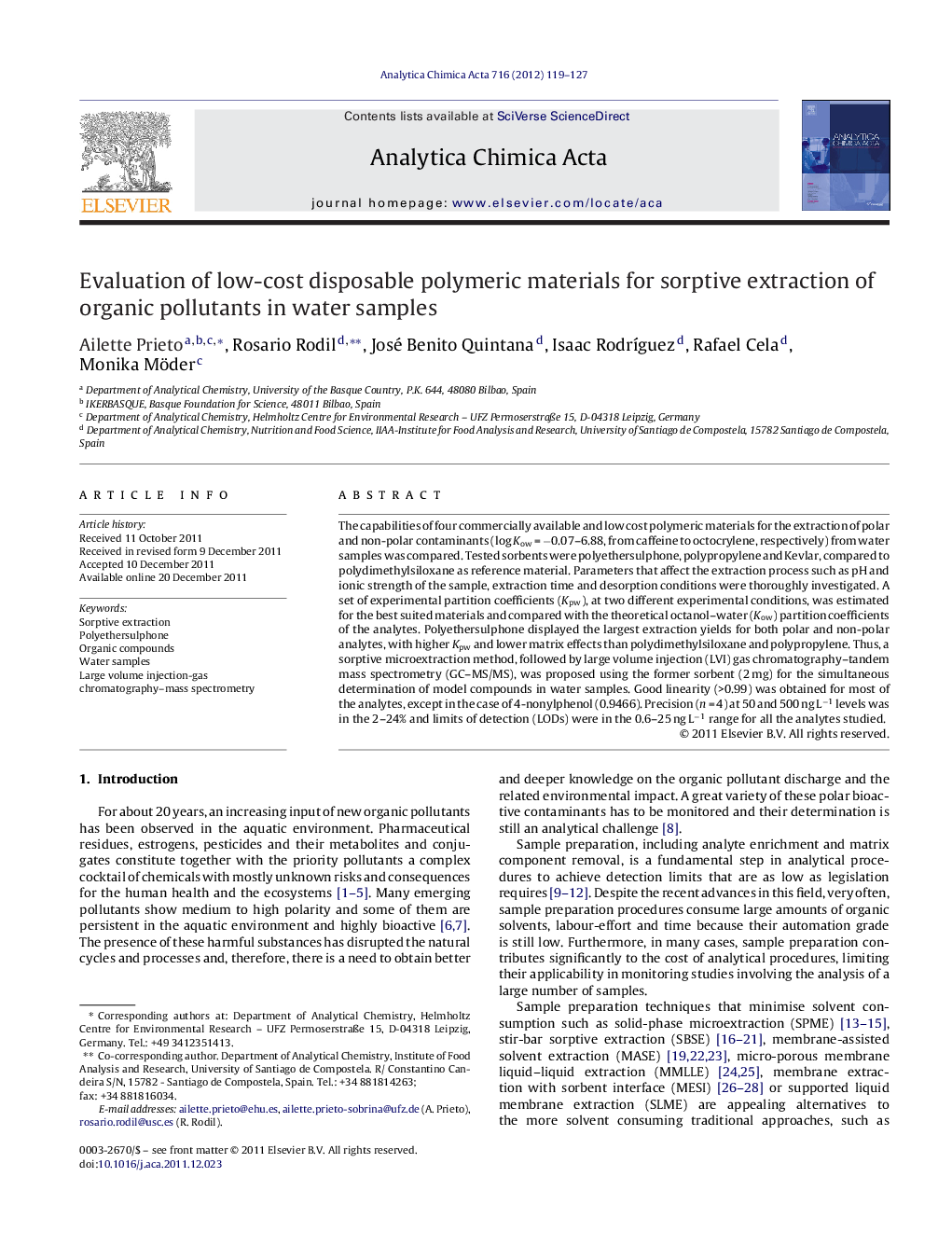| کد مقاله | کد نشریه | سال انتشار | مقاله انگلیسی | نسخه تمام متن |
|---|---|---|---|---|
| 1165872 | 1491116 | 2012 | 9 صفحه PDF | دانلود رایگان |

The capabilities of four commercially available and low cost polymeric materials for the extraction of polar and non-polar contaminants (log Kow = −0.07–6.88, from caffeine to octocrylene, respectively) from water samples was compared. Tested sorbents were polyethersulphone, polypropylene and Kevlar, compared to polydimethylsiloxane as reference material. Parameters that affect the extraction process such as pH and ionic strength of the sample, extraction time and desorption conditions were thoroughly investigated. A set of experimental partition coefficients (Kpw), at two different experimental conditions, was estimated for the best suited materials and compared with the theoretical octanol–water (Kow) partition coefficients of the analytes. Polyethersulphone displayed the largest extraction yields for both polar and non-polar analytes, with higher Kpw and lower matrix effects than polydimethylsiloxane and polypropylene. Thus, a sorptive microextraction method, followed by large volume injection (LVI) gas chromatography–tandem mass spectrometry (GC–MS/MS), was proposed using the former sorbent (2 mg) for the simultaneous determination of model compounds in water samples. Good linearity (>0.99) was obtained for most of the analytes, except in the case of 4-nonylphenol (0.9466). Precision (n = 4) at 50 and 500 ng L−1 levels was in the 2–24% and limits of detection (LODs) were in the 0.6–25 ng L−1 range for all the analytes studied.
Figure optionsDownload as PowerPoint slideHighlights
► We developed and applied a new procedure using PES tube material in wastewater.
► PES showed best extraction results for both polar and non-polar compounds.
► The analytes were detected in the 0.03–25 ng L−1 range.
► The partition coefficients estimated for 13 of the compounds were higher for PES.
► The extraction of some analytes was only possible with PES.
Journal: Analytica Chimica Acta - Volume 716, 24 February 2012, Pages 119–127